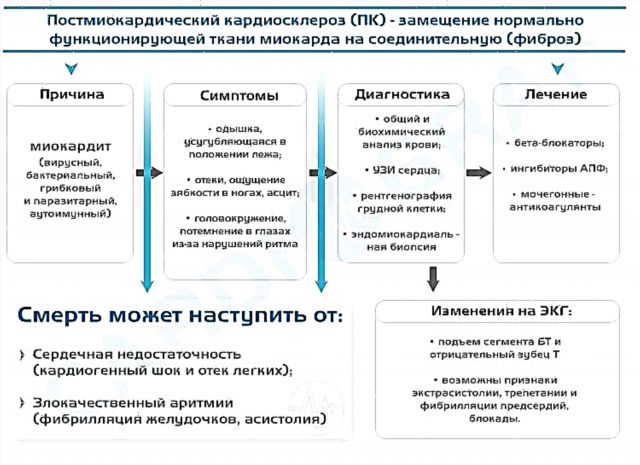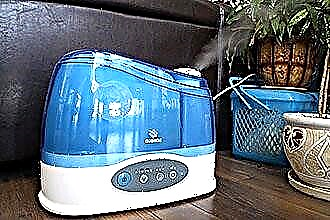A compress is a multilayer medical bandage that is applied to certain parts of the body for the purpose of mechanical, chemical or thermal effects. Cotton-gauze applications are used as part of local therapy for the treatment of colds accompanied by dry and wet coughs. Warming compresses for dry coughs facilitate the passage and evacuation of phlegm from the airways.
Physiotherapy treatment is prescribed at the initial stage of development of ENT disease or at the stage of resolving catarrhal processes. Local heating of tissues accelerates blood microcirculation, as a result of which the process of discharge of viscous secretions from the lower respiratory tract is facilitated.
What is a dry cough?
Cough is a forced exhalation resulting from irritation of receptors located in the nasopharynx, trachea, paranasal sinuses, larynx and bronchi. The main physiological role of the cough reaction is to cleanse the tracheobronchial tree from pathogens, mucus, dust and other foreign agents.  The act of cough occurs due to mechanical irritation of the receptors, which is most often due to infectious inflammation of the respiratory system.
The act of cough occurs due to mechanical irritation of the receptors, which is most often due to infectious inflammation of the respiratory system.
In fact, cough is a concomitant symptom that occurs as a result of inflammation of the mucous membranes of the airways. A dry cough is characterized by the absence of phlegm during forced expiration. To facilitate the course of the disease, it is necessary to stimulate the evacuation of pathological secretions. For these purposes, they often resort to the use of warming compresses.
It should be noted that the act of cough is only a manifestation of ENT disease. To fix the problem, you need to find out the cause of the problem. Typical symptoms may indicate the development of the following diseases:
- flu;
- angina;
- sinusitis;
- laryngitis;
- adenoiditis;
- asthma;
- allergy;
- pharyngitis.
Important! You can use antitussives for no more than 3-4 days in a row.
For the symptomatic treatment of a hacking cough, many resort to the use of antitussives. They suppress the normal cough response, thereby relieving symptoms. But if a dry cough was caused by an infectious lesion of the ENT organs, the process of mucus discharge will begin within 3-4 days. Suppression of the cough reaction will lead to the accumulation of pathological secretions in the lungs, which will cause serious complications.
The principle of operation of compresses
 Local treatment cannot replace etiotropic therapy, which consists in taking drugs that destroy the causative agent of the infection. Physical therapy only contributes to symptom relief. In addition, warming applications cannot be used at the stage of acute inflammation of the ENT organs. Heating the tissues stimulates the reproduction of bacterial flora, which can lead to the generalization of pathological processes.
Local treatment cannot replace etiotropic therapy, which consists in taking drugs that destroy the causative agent of the infection. Physical therapy only contributes to symptom relief. In addition, warming applications cannot be used at the stage of acute inflammation of the ENT organs. Heating the tissues stimulates the reproduction of bacterial flora, which can lead to the generalization of pathological processes.
Compresses (applications) are a type of pull-back therapy and are used to resorb the foci of inflammation in the affected tissues. As a result of reflex heat exposure, pain sensitivity decreases, which is associated with a rush of blood to the affected area of the body. Restoration of tissue trophism stimulates regeneration processes, as a result of which epithelialization of the affected organs is accelerated.
Important! Do not use warming medical dressings for heart failure, thrombophlebitis, atherosclerosis and bleeding tendencies.
Applications are placed mainly on the back and chest, which promotes local heating of the respiratory system. During the procedure, it is undesirable to apply warming bandages to the heart area, which is associated with an increase in the load on the cardiovascular system.
Types of compresses
What compresses can be used for dry coughs? Conditionally, medical dressings are divided into two types - dry and wet. The former are used primarily to protect open wounds from contamination, while the latter are used to warm tissues affected by inflammation. In turn, wet compresses are divided into three types:
- cold - cause constriction of blood vessels, which helps to reduce blood circulation in certain organs and parts of the body; Used to relieve symptoms resulting from severe bruising, fever, or nosebleeds
- warming - contribute to the elimination of residual inflammatory processes in internal tissues and organs; used in the treatment of tonsillitis, tracheitis, laryngitis, pleurisy, etc.;
- hot - have a vasodilating and analgesic effect; used for neuritis, migraine and joint pain.
Systematic heating of the ENT organs stimulates the secretory function of the mucous membranes. Thus, a dry cough quickly turns into a productive (wet) cough, which speeds up the process of cleansing the airways from pathogenic mucus.
What does the compress consist of?
 The effectiveness of the applications is due to the thermal effect on the tissues, which leads to an acceleration of blood microcirculation and vasodilation. In the case of using local anti-inflammatory drugs, the process of their penetration into the foci of inflammation is greatly accelerated. The effectiveness of physiotherapy largely depends on the correct application of the compress and the regularity of the procedures.
The effectiveness of the applications is due to the thermal effect on the tissues, which leads to an acceleration of blood microcirculation and vasodilation. In the case of using local anti-inflammatory drugs, the process of their penetration into the foci of inflammation is greatly accelerated. The effectiveness of physiotherapy largely depends on the correct application of the compress and the regularity of the procedures.
Warming compresses are composed of the following layers:
- inner - gauze, cotton cloth or bandages soaked in a warming liquid;
- medium - polyethylene, cellophane, waxed paper, which acts as an insulating layer;
- external - cotton wool or woolen shawl, with the help of which heat exchange with the medium is reduced.
Important! Warming up of the chest and back can be done only during the treatment of uncomplicated colds.
The thermal effect on tissues promotes the production of antiviral agents in the body. Stimulation of interferon synthesis leads to an increase in nonspecific immunity, which accelerates the process of destruction of pathogenic agents and, accordingly, recovery.
Compressing technique
Physiotherapy treatment is prescribed to reduce the inflammatory processes in the ENT organs that cause a cough reaction. Local exposure to heat promotes the resorption of infiltrates in the mucous membranes of the airways, bronchi and trachea. To achieve the maximum therapeutic effect, it is necessary to take into account the peculiarities of the technique of applying medical dressings:
- a gauze bandage folded in several layers is impregnated with a warming liquid and applied to the chest or back;
- an insulating film is placed on top of the gauze - wax paper or polyethylene;
 the compress is insulated with a layer of cotton wool or flannel, after which the patient is covered with a warm blanket.
the compress is insulated with a layer of cotton wool or flannel, after which the patient is covered with a warm blanket.
Each subsequent layer of the bandage should be 1.5-2 cm wider than the previous one.
Warming applications should be put on for at least 4-6 hours in order to enhance the therapeutic effect of heat. Alcohol and semi-alcohol solutions are often used as a warming liquid. You can prevent skin burns with petroleum jelly, which is used to lubricate the chest or back before applying wet gauze.
Mustard Appliques
The principle of operation of mustard powder is based on the local irritating effect of the essential oils that make up it. In the field of application of the agent, a reflex expansion of blood capillaries is observed, which promotes blood flow to the ENT organs affected by inflammation.The systematic use of mustard compresses stimulates the secretion and evacuation of mucus from the bronchi, which helps to restore their drainage function and relieve dry cough.
Medical bandages are placed mainly on the feet, back or chest. Since mustard can irritate tissues, its effect must be softened with the help of additional components - honey, vegetable oil, sour cream, etc. For the treatment of severe cough, it is more advisable to use the following recipes for making compresses:
- mix in 1 tbsp. l. mustard, flour and honey, adding 100 ml of water to the thick;
- Dissolve 50 g of powdered mustard in 250 ml of water, adding 1 tbsp. melted honey and 2 tbsp. vegetable oil;
- in 200 ml of alcohol solution add 1 teaspoon of mustard, olive oil and flour.
Important! After using the compress, it is undesirable to go outside for 1.5-2 hours.
In the prepared solution, it is necessary to moisten gauze folded in several layers and apply to the chest. The medical bandage should be kept on the body for at least 2 hours, then remove the remnants of the product and lubricate the skin with a nourishing cream. To achieve the desired therapeutic effect, the procedure should be performed 2-3 times a day.
Applications with "Dimexid"
"Dimexid" is a local anesthetic, warming and anti-inflammatory drug. It is used mainly for the elimination of inflammatory edema in the mucous membranes of the upper respiratory tract. The antiseptic solution quickly penetrates into the foci of inflammation and destroys pathogenic bacteria. The elimination of catarrhal processes eliminates the main irritant of the cough receptors, as a result of which a dry, unproductive cough is suppressed.
It is strictly forbidden to use the drug for patients suffering from atherosclerosis, renal failure and cardiovascular pathologies.
Setting the compress:
- a solution of "Dimexidum" is mixed with water in a ratio of 1: 3;
- moisten gauze in a liquid heated to 50 ° C;
- a bandage soaked in solution is applied to the chest;
- cover the wet layer of the compress with wax paper and cotton wool;
- after 40-50 minutes, the bandage is removed.
The procedure is performed twice a day for 5-7 days. If the cough persists within the specified period, you should seek the help of a specialist.
Applications with honey
 Honey is a fortified product with a pronounced anti-inflammatory effect. It contains antimicrobial components that, upon contact with the skin, quickly penetrate deep into the affected tissues, contributing to the destruction of pathogens. Honey applications do not irritate the skin and therefore can be used even in pediatric therapy for the treatment of dry cough in preschool children.
Honey is a fortified product with a pronounced anti-inflammatory effect. It contains antimicrobial components that, upon contact with the skin, quickly penetrate deep into the affected tissues, contributing to the destruction of pathogens. Honey applications do not irritate the skin and therefore can be used even in pediatric therapy for the treatment of dry cough in preschool children.
It is more advisable to do compresses with honey overnight in order to enhance the effect of the beneficial components that make up the product. Below are the recipes for the preparation of antitussives:
- mix 2 tbsp. honey with 100 ml of warm milk and 20 ml of vegetable oil;
- dissolve 1 tbsp. honey in 150 ml of medical alcohol, adding 4-5 drops of peppermint essential oil to the product;
- mix 1 tbsp. aloe juice with 2 tbsp. honey and 20 ml of vodka
Antitussive honey applications can be used in the treatment of bronchitis, pneumonia and broncheotracheitis. The vitamins and amino acids contained in the product quickly eliminate inflammation, which helps to restore the secretory function of the ciliated epithelium.
Expectorants
It is possible to accelerate the discharge of viscous secretions from the respiratory tract with the help of herbal preparations. Medicinal herbs thin mucus, which contributes to the transition of a dry cough into a productive one. Chest preparations of mucolytic action accelerate the evacuation of pathological mucus from the bronchi, which prevents the chronicization of inflammatory processes.
The following herbs have pronounced expectorant properties:
- marshmallow;
- coltsfoot;
- St. John's wort;
- oregano;
- calendula;
- wild rosemary;

- plantain.
Important! The simultaneous use of expectorant and antitussive agents leads to the accumulation of mucus in the bronchi, which is fraught with the development of pneumonia.
The use of herbal decoctions reduces the intensity of catarrhal processes, which is associated with their antiphlogistic, bronchodilatory and expectorant effects. For the preparation of a medicinal solution 1 tbsp. raw materials are poured into 300 ml of water and boiled for 10 minutes. Strained broth is taken after meals 2-3 times a day, 100-150 ml.
Contraindications
Local therapy of ENT diseases accelerates the healing process, which is associated with the absorbent, expectorant and anti-inflammatory effect of the applications. However, the setting of warming compresses should only be prescribed by a specialist after the patient has undergone an appropriate examination.
It is strictly forbidden to use physiotherapeutic treatment for:
- subfebrile and febrile fever;
- allergic skin pathologies;
- violation of the integrity of the skin;
- acute inflammation of the respiratory tract;
- cardiovascular diseases.
It is not recommended to use warming compresses to relieve dry coughs in women during gestation, especially in the first trimester of pregnancy. Forced exhalation stimulates the muscles in the uterus to contract, which can lead to miscarriage.

 the compress is insulated with a layer of cotton wool or flannel, after which the patient is covered with a warm blanket.
the compress is insulated with a layer of cotton wool or flannel, after which the patient is covered with a warm blanket.


